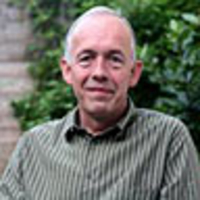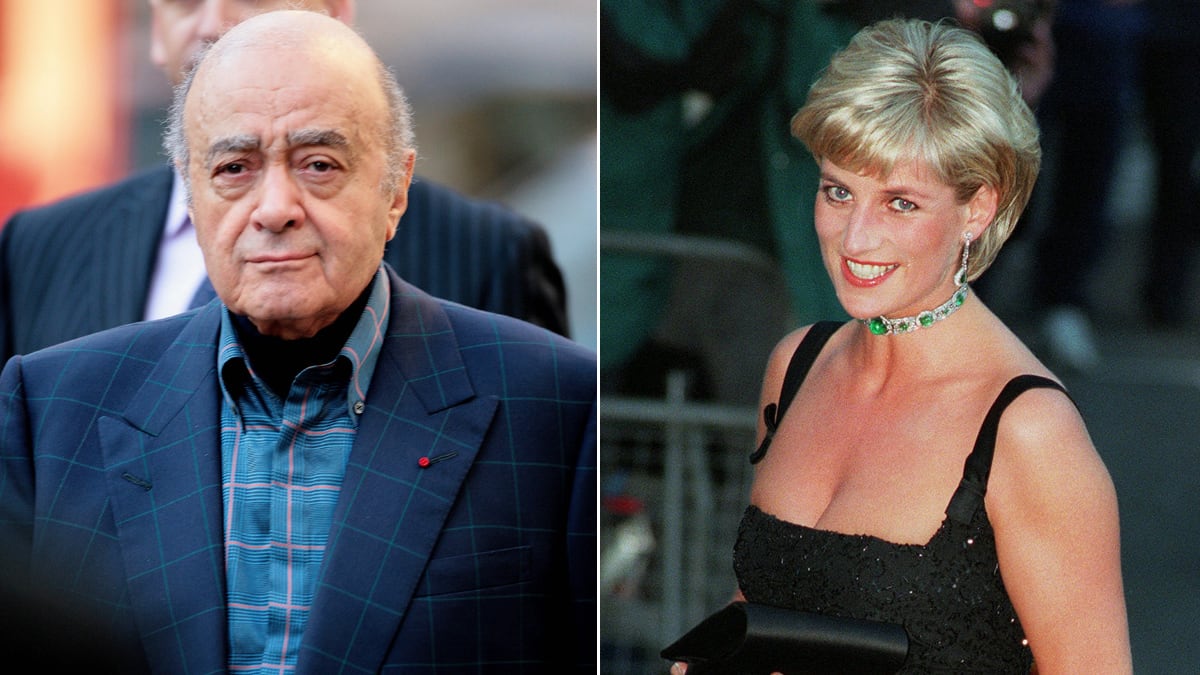Had Princess Diana awoken on her 50th birthday in Kensington Palace on July 1, 2011, she might have sauntered a few hundred yards to Harrods to celebrate with a shopping spree. She was known to enjoy this. She might have been blissfully unaware she was covertly being filmed by the owner’s surveillance cameras. Harrods shop staff were under strict orders to alert the jolly Egyptian, who would then “accidentally” arrange to bump into Diana. The princess thought she had got to know Fayed quite well and, although she told close friends that she thought of him as a “bit of a rogue,” she thought she could handle him.
This was Diana’s most tragic misjudgement. Had she never shopped at Harrods she might still be alive today.
She could never have dreamed of the role the shopkeeper, who had invited her to holiday with his family in the summer of 1997, would play in her death. Or that he would subsequently spend tens of millions of pounds attempting to mislead the world as to how she perished with his son, Dodi, while in his care.
Diana would no doubt be shocked today to find a Google search for “Conspiracy Theories Princess Diana” whistles up in less than a tenth of a second more than a million and a half responses. Many of responses are the fruits of Fayed’s decade and a half long campaign against the truth of how she died while in his care. Fayed has spent tens of millions of dollars to harvest this rich crop of ‘unanswered questions’ and ‘allegations’.
In French “an ‘allegation’ is a lie until it is proven,” according to senior detective Commander Jean-Claude Mulles. He was in the Alma tunnel immediately after the crash and spearheaded the 2-year (1997-99) French probe into the crash. For the French cops, 14 years of Fayed conspiracy campaigning has represented one enormous “allegation.” The subsequent British investigation into the crash, “Operation Paget,” led by former Met chief, Lord Stevens, investigated more than 170 Fayed “allegations” about the crash. Paget, like the French, found not one single shred of evidence to support any of them.

No amount of Fayed “allegations” or internet fantasizing can prevent history recording the Fayed family’s role in the fatal crash. On Princess Diana’s last night alive she left a Fayed hotel in a Fayed car being driven by a Fayed “driver,” Henri Paul. She was sitting next to Fayed’s son, Dodi, and behind a Fayed bodyguard, Trevor Rees-Jones. Their destination should have been a Fayed apartment. According to inquest testimony from both of Diana’s Fayed bodyguards on the night, Kez Wingfield and Trevor Rees-Jones, Fayed had approved this “plan” with Dodi on the phone from London immediately before the fatal journey started.
The Fayed “plan” involved ditching the two official Fayed chauffeurs, Philippe Dorneau and John-François Musa, who had been waiting for the couple outside the Ritz in two Mercedes. Paul was invited to take the wheel of a third Mercedes that Dodi summoned to the hotel’s rear exit. Tragically, history records that no qualified chauffeur has ever had a fatal accident in France.
Dodi wanted to leave alone with Diana and without either bodyguard. Because they both objected strongly, Rees-Jones was allowed to accompany the couple on what proved to be their doomed journey.
Yorkshireman Wingfield told me later, “It was the best ‘plan’ Dodi ever came up with, and it were crap.”

Fayed has given at least three, characteristically contradictory, versions of this last phone conversation with his son, which he acknowledges took place. Predictably each version absolves him of any responsibility for the decision to place Paul at the wheel.
Fayed claimed in May, in the People newspaper, as Prince William prepared to take his new bride on honeymoon, that he had “letters written by Prince William expressing fears his mother died because of a “high-level conspiracy.” If this is the case, and Diana’s first born has really been co-opted to the conspiracy school of thinking, why did Mr Fayed’s QCs not make these letters available to the inquests? Where are they now? There is no record of any post-inquest correspondence between Fayed and Prince William, according to Buckingham Palace.
Does this “allegation” have as much substance as Fayed’s key inquest “allegation” that William’s grandfather, the Duke of Edinburgh, masterminded Diana’s “murder”? Zero evidence has been produced to support this “allegation” in 14 years since the crash, and the 2008 inquests jury threw it out. No member of the royal family has ever dissented from the inquests’ verdict.
The incendiary ‘engagement’ ring
No evidence has ever been produced to prove Diana and Dodi were engaged. However, Fayed displayed a ring in Harrods, and then scurrilously claimed it was Diana’s engagement ring. Exhibiting the lack of taste that Fulham football fans have become familiar with—think Michael Jackson statue—Fayed even commissioned a statue of Diana and Dodi, which he entitled “Innocent Victims,” as well as the tacky Harrods memorial claiming that she had secretly become engaged to his son, but not told anyone apart from him.
Her inquest established that Diana never wore or even saw the ring featured in Harrods, but it has played a key role in Fayed’s fantasizing. In the words of the sole survivor of the crash, Trevor Rees-Jones, the ring became, “the incendiary spark for the global spread of conspiracy theories that fuelled political and racist passions, clouded the investigation and besmirched the innocent.”
The new owners of Harrods—the Qatari royal family—have tastefully removed any mention of “engagement” from the display. The Qataris have also, thankfully, removed the ghastly sphinx-style effigies, all of which sported Fayed’s grinning face, which used to flank the escalators leading down the “engagement” ring display.
However, the stubby, unattractive Repossi ring is still on show today, mounted by Fayed in a small glass pyramid underneath a grubby Ritz hotel champagne glass.
How much was the MI6 officer allegedly paid for his incendiary “conspiracy” evidence?
No testimony to the French investigation was more inflammatory than that of handsome former MI6 officer, Richard Tomlinson. No testimony cost the British inquests, and thus the British taxpayer, more. It alone extended the inquests by weeks, and detained MI6 officers who could have been concentrating on countering the threat to the U.K. of global terrorism.
I chronicled how Fayed and his operatives wooed Tomlinson in France in 1998 in my book, Diana The Last Days. Well after the inquests concluded, one of Fayed’s top officials told me that he believes Fayed had actually paid Tomlinson in the summer of 1998, before he initially agreed to testify in France.
Tomlinson featured in countless pro-conspiracy, Fayed-sponsored accounts of the crash after he watched ITV’s notorious 1998 show, Diana-Secrets Behind the Crash. Tomlinson testified that he had been struck by the interview with François Levistre. Levistre, the French man who was much feted by Fayed, claimed to have seen a blinding flash before the crash. Levistre’s inquest “evidence” was so unimpressive that his wife, whom he claimed was sitting by him in the car in the Alma tunnel, refused to testify after she heard her husband’s contribution. Tomlinson testified that MI6 had devised a similar “plot” to kill the Serb leader, Slobodan Milosevic, in 1992. Self-evidently, the “plot” had not been executed if it ever existed. (Milosevic died of a heart attack in The Hague in 2006 while being tried for crimes against humanity.)
With Tomlinson, Fayed seemed to believe he had struck conspiracy gold—an English public-school boy whom MI6 acknowledged had actually served in British secret intelligence. If he calculated that MI6 would never publicly comment on the rogue spy’s allegations he was mistaken. At the inquests up to a dozen MI6 officers, headed by former MI6 chief Sir Richard Dearlove, appeared before the coroner to deny any involvement in a “conspiracy” that never existed.
Before he would agree to cooperate with Fayed, and testify to the French investigation, Tomlinson allegedly insisted on being paid. I interviewed a very senior Fayed official who claimed that he was instructed by Fayed to pass Tomlinson a brown envelope stuffed with money. This classic, if clichéd, meeting allegedly occurred in a café in a Paris railway station in August 1998. Later that week, just before the first anniversary of Diana’s death, Tomlinson testified before the French inquiry in Paris. Tomlinson has eluded all my attempts to confirm this allegation, but he did regret his contact with the Egyptian, “Mr. Al Fayed believes in a plot. He is a broken, sad man. I obviously don’t want to judge him, but I don’t agree with him.”
As for Fayed himself, he has refused for a decade to answer any of my questions about the crash.
The Ritz hotel staff knew Henri Paul was drunk.
The French and British probes both found that Diana was killed in a crash caused by the driver, Henri Paul, who was speeding at more than twice the legal limit, with more than three times the legally permitted amount of alcohol inside him. The 2007/8 British inquests jury concurred, concluding Diana and Dodi were “unlawfully killed” in an accident caused by the drunken Paul and the pursuing, unnamed, paparazzi.
The acting head of the Ritz, Claude Roulet, was shocked when he witnessed the corpse of his close friend, Henri Paul, being removed from the Alma tunnel. He knew Paul was not a qualified chauffeur and had never driven the Fayeds anywhere, ever. Paul was acting head of Ritz security. Roulet had seen Paul drinking in a Paris bar earlier that evening when Paul had no plans to return to the Ritz or drive a car. Roulet joined several Ritz staff who agreed at Diana’s and Dodi’s inquests that Paul was “un peu pompette” (a little drunk) before he left the hotel.
Why did Fayed take unsuccessful legal action to silence Roulet in Paris in 2008?
Unlawful Killing Film—Why show pap snap of Diana dying?
On ITV news in 2008 Fayed tearfully declined to challenge the inquest verdict saying, “for the sake of the princes…I leave the rest to God.”
Prince William could never have imagined that, three years on, Fayed would spend £2.5 million on a feature film, Unlawful Killing, which premiered in Cannes in May as he took his bride on honeymoon.
Described by the Daily Mail’s film critic Baz Bamigboye as “unlawfully dull,” the film is, indeed, a tired litany of Fayed’s conspiracy “assertions” which found no traction with the inquests’ jury. Unsurprisingly British TV networks are not interested in broadcasting it.
The final scene could best be described as the bonfire of Fayed’s vanities. The Egyptian is seen with the film’s presenter, the actor Keith Allen, torching Harrods’ former royal warrants, the first of which Prince Philip removed from the store in 2000.
Shockingly the film also contains a paparazzo picture of Diana dying. Media throughout the world unanimously withdrew offers to buy such pictures the moment her death was announced in the early hours of August 31, 1997.
I have had all the pictures of the crash seized by the French cops in my possession for years. In some Diana fights for her life. In others the corpses of Dodi and Henri Paul lie sadly by the wrecked Mercedes, following their removal from the car by emergency services. Not once have I considered publishing any of these for reasons I used to think everyone would understand. But now, it appears, Fayed does not. He should spare us any more of his “unanswered questions,” and mark Diana’s 50th birthday by allowing her to genuinely rest in peace.






